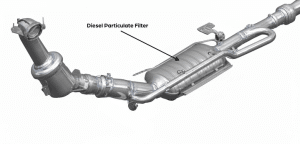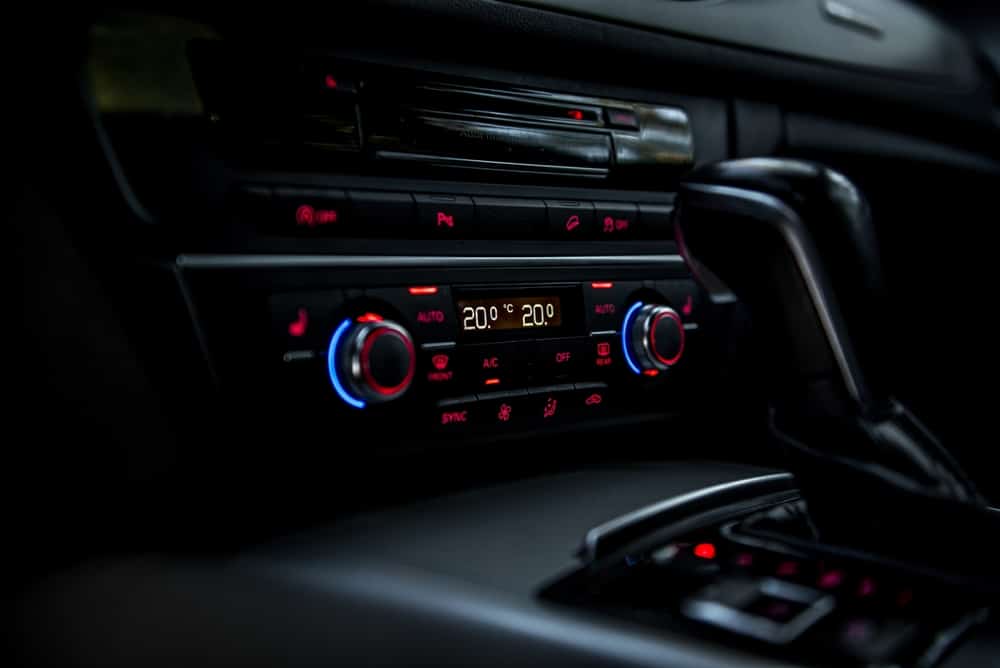DPF Codes P2463 & P246B
Mrs P’s Land Rover Discovery Sport was driving normally when, without warning, it slipped into limp mode. Power dropped sharply, the car became difficult to manage on the M6 near Wigan, and the dashboard lit up with both the DPF and Engine Management lights.
For Mrs P, this was more than just frustrating. Her Land Rover was a car she relied on every day, and suddenly it wasn’t delivering the performance she expected. Added to that was the concern of a costly repair and the possibility of long-term engine damage.
When she brought her Discovery Sport to Standish Service Station in Wigan, trusted by drivers across Bolton and the wider area, she wanted clarity. No guesswork. No wasted expense. Just a clear diagnosis and the right repair, first time.
Before we explain how our technicians restored her Land Rover, it’s worth taking a closer look at the Diesel Particulate Filter, why it matters, and how it can create the kind of limp mode issue Mrs P experienced.
The Diesel Particulate Filter – Explained Simply
Every modern Land Rover diesel comes fitted with a Diesel Particulate Filter (DPF). Its job is to trap the tiny soot particles created when fuel burns, preventing them from being released into the atmosphere. These particles remain stored in the filter until the exhaust reaches a high enough temperature to burn them away in a process known as regeneration.

The system works well, but it isn’t foolproof. If a Land Rover is mainly used for short journeys or slow driving conditions, the exhaust often doesn’t reach the required temperature for regeneration to complete. When that happens, soot builds up inside the filter.
As this build-up increases, the DPF becomes restricted and loses its effectiveness. At that point, dashboard warnings will appear — and if the issue continues without action, the vehicle will eventually switch into limp mode to protect the engine.
That’s why you should never ignore a DPF warning. What begins as a minor build-up can soon turn into a major blockage, harming performance and driving up repair costs.
Early Fault Detection – P2463 & P246B
When Mrs P brought his Land Rover to us, the dashboard was already lit with two warning lights: the DPF light and the Engine Management Light. The vehicle had gone into limp mode, leaving it short on power and difficult to handle.
The first step was to connect the Land Rover to our dealer-level diagnostic equipment. The scan highlighted two stored codes:
- P2463-00 – Diesel Particulate Filter restriction, soot accumulation. This showed that the DPF was badly restricted, with soot levels far above the safe operating limit.
- P246B-00 – Vehicle conditions incorrect for DPF regeneration. This confirmed the filter hadn’t been able to regenerate, often caused by short or low-speed journeys where the exhaust never gets hot enough.
For our technicians, this information provided an essential lead; but a fault code only highlights the symptom, not the underlying cause. At Standish Service Station in Wigan, we use codes as the first clue in diagnosis, not the full story.
To ensure the correct repair, the next stage was to run a structured investigation — carefully checking each area that could have contributed to the fault before moving forward.
Step-by-Step Review – How We Confirmed the Cause
After the codes were revealed, we turned our attention to finding the root fault responsible for Mrs P’s Land Rover’s issues. At Standish Service Station, our approach is always systematic — reviewing each area carefully to confirm the real cause rather than making assumptions.
Here’s how our technicians approached the job:
- Engine oil check – A blocked DPF often leads to failed regenerations, which can allow fuel to seep into the oil. In this Discovery Sport, the oil showed clear signs of dilution, so an oil and filter change would be needed later in the repair to protect the engine.
- Air filter inspection – A clogged or damaged air filter can limit airflow, making the engine run rich and increasing soot production. This filter was in good condition, so we could rule it out.
- DPF pressure readings – Using dealer-level diagnostic tools, we measured the pressure across the filter. The readings confirmed a severe restriction, consistent with the limp mode Mrs P had reported.
- Internal DPF check – We inspected the filter for internal damage such as cracks or melting. None were found, which meant the filter itself could be restored rather than replaced.
- Intake and boost system inspection – Finally, we checked the intake and turbo system for leaks or weaknesses that could have contributed to the blockage. No faults were detected.
By carefully working through this review, we confirmed the problem was a soot overload rather than a secondary issue. With the cause identified, we could move forward with the correct repair.
If your Land Rover is showing DPF or engine warnings, call our team on 01257 422899 before the issue gets worse.
The DPF Repair Explained – Clearing the Fault Codes
With our checks confirming a soot overload and signs of diluted oil, the next step was to restore Mrs P’s Discovery Sport to full working order. At this point, the repair had to be handled with care and accuracy, following a structured process to make sure the fault was resolved fully.
Here’s how our technicians carried out the repair:
- Oil and filter service – Because the oil had been compromised by fuel dilution, we replaced both the oil and filter. This ensured the engine was running with clean oil, reducing the risk of premature wear.
- DPF clean and regeneration – We performed a controlled regeneration to burn off the excess soot and clear the blockage inside the filter.
- Adaptations reset – Once soot levels were brought back within manufacturer limits, we reset the system’s adaptations. This confirmed to the ECU that the filter was clean and allowed future regenerations to function properly.
- Fault memory clear and validation checks – Finally, we cleared the stored codes and completed validation checks. With no dashboard warnings remaining and the DPF back to normal operation, the Land Rover was ready for the road again.
Before handing the vehicle back, we also spoke with Mrs P about how certain driving habits can affect the DPF system. By understanding the conditions that support regeneration, she could help prevent the same problem from returning.
Final Result – A Land Rover Back at Its Best

With the repair complete, Mrs P’s Discovery Sport was back in to its best. The warning lights had cleared, the DPF fault was fixed, and the car was performing as it should once again.
For Mrs P, the change was obvious straight away. Instead of struggling with a sluggish drive, she left our workshop in a Land Rover that felt strong, responsive, and ready for the road.
That’s the benefit of expert repair — tracing the fault to its source, fixing it correctly, and returning the car in a condition the driver can trust.
Choose Standish Service Station for Trusted Land Rover Repairs
If your Land Rover’s DPF light is on, don’t ignore it. These systems are complex and need professional care to avoid further damage. At Standish Service Station in Wigan, our team uses dealer-level equipment and years of expertise to diagnose the real fault and repair it properly, first time.
We deliver the accuracy you’d expect from a main dealer, but with the value and service of a trusted independent garage.
Why drivers choose Standish Service Station:
- Dealer-level diagnostic equipment and repair processes
- Skilled technicians who address the true cause, not just the symptom
- 12-month parts and labour guarantee on all work
- Courtesy cars available to keep you on the road
- Transparent, itemised quotes with no hidden extras
We’re proud of our {{average-rating}}-star Google rating from {{review-count}} drivers who rely on us for dependable service and expert repair.
Whether your Land Rover is in limp mode, displaying a DPF warning, or not performing as it should, call our team on 01257 422899 to book your appointment.



